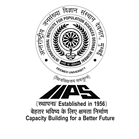- About IIPS
- Academics
- Study @ IIPS
- Departments
- Centres
- Controller of Examination
- Programme
- Distance and Online Education
- Training
- Facilities/Services
- Resources
- Virtual Learning
- Digital Initiatives (MHRD)
- Notice
- Seminars / Workshops / Conferences
- Conferences
- Publications
- Seminars
- Sponsored Research
- Workshops
- Collaboration
- National
- International
- NEP 2020
- Admission
- Courses
- Admission Bulletin
- TIME-TABLE For Admission 2025-26
- Model Question Papers
- Programme Coordinators
- Fellowships
- Academic Calendar
- International Students
- Visa Information
- Administration
- Faculty & Staff
- Research & Publications
- Library
- Information
- Right to Information
- Vigilance Officer
- Annual Report
- Director's Report
- Cells & Commitees
- Cells
- Commitees
- Committees of NEP 2020
- Staff Walfare Committee
- Cultural Committee
- Internal Committee
- Purchase Commitee
- Students Academic Committee
- Student Research Ethics Committee
- Anti-Ragging Committee
- Institutional Review Board
- Social Media Committee
- Prevention of Caste-based Discrimination Committee
- Code of Conduct and Professional Ethics
- National and International honours, Awards, Recognition, and Medals
- Online Facilities
- Employee's Corner
- Memorial Lectures
- Convocation
- IIPS Newsletters
- COVID 19 Information
- Life @ IIPS
Husbands out-migration and autonomy of left behind wives In context of South Asia
- Home
- Husbands out-migration and autonomy of left behind wives In context of South Asia
Abstract Content (not more than 300 word, should include: Introduction, Objective, Methodology, critical findings & Conclusion):
South Asia is the source country for the world’s largest stock of international migrants and the top recipient of remittances in the world ($163 billion in 2022). Physical separation of males from their families due to labour migration is a predominant feature in the region. It has a profound effect on the left behind families, particularly on the women who stay back. This paper examines the consequences of labour migration on the autonomy and decision-making of women in rural households in India, Pakistan and Nepal. It uses data from Pakistan Demographic Health Survey 2017-18, and Nepal Demographic Health Survey 2016 which contains a set of questions on migration. Since India has a national-level data gap on migration, it uses data from the Middle Ganga Plain (MGP) migration survey conducted in a pocket of high out-migration i.e., in Uttar Pradesh and Bihar (2018 and 2019). Women’s say in household expenditure, health care, mobility and access to mobile and banking are used as indicators of autonomy. The study compares the women from emigrant households with those living in households without migration. The result shows that though international labour migration is adopted as a temporary household’s livelihood strategy, it plays a significant role in the autonomy of women who live at their place of origin.
Abstract theme:
In case of not been selected for oral presentation, do you want to be considered for the poster presentation ?:
No
Do you require financial support to attend the seminar ? (Not applicable for virtual meet):
Yes-full
Gender:
Female
Evaluation Status:
No
